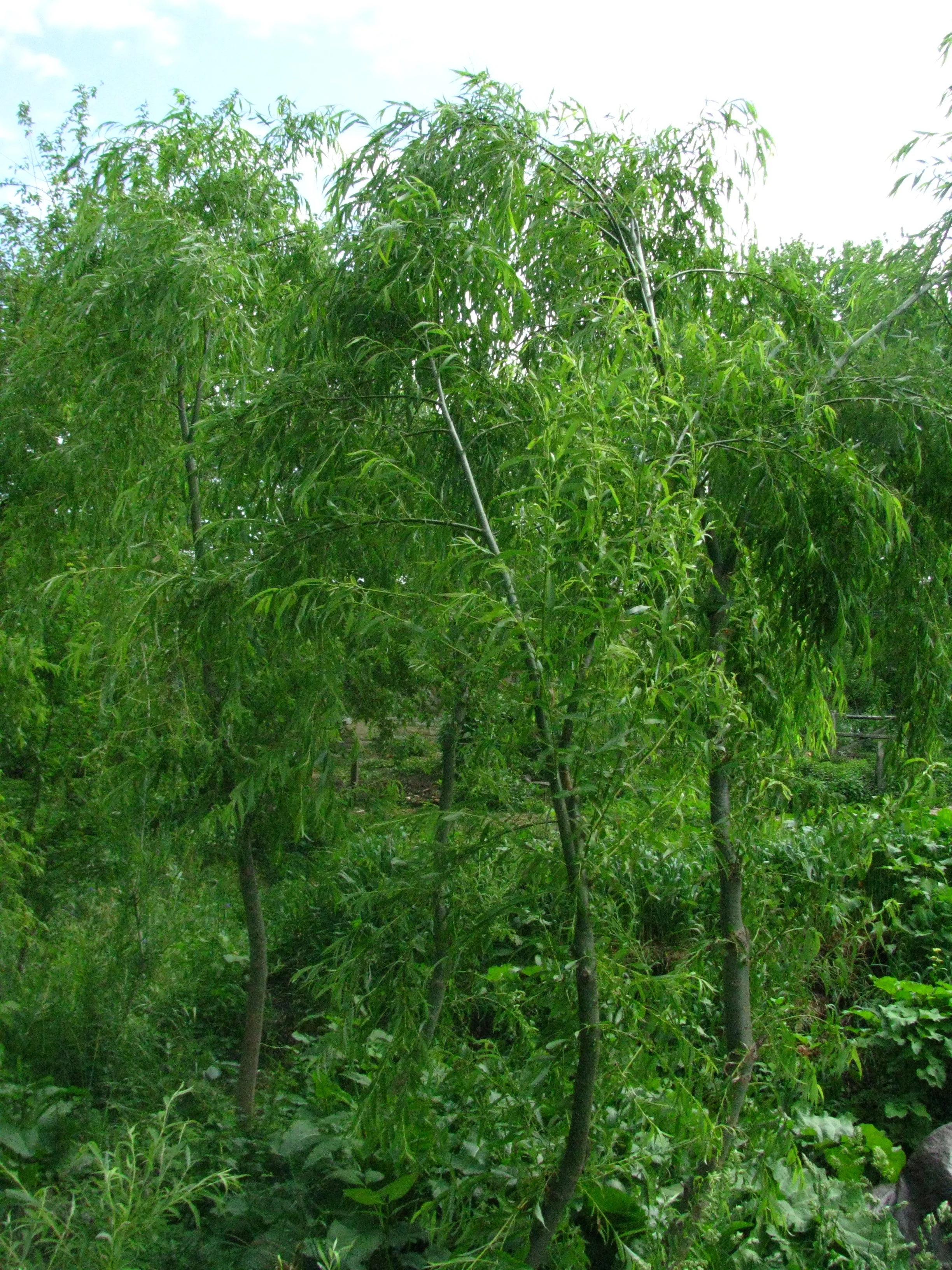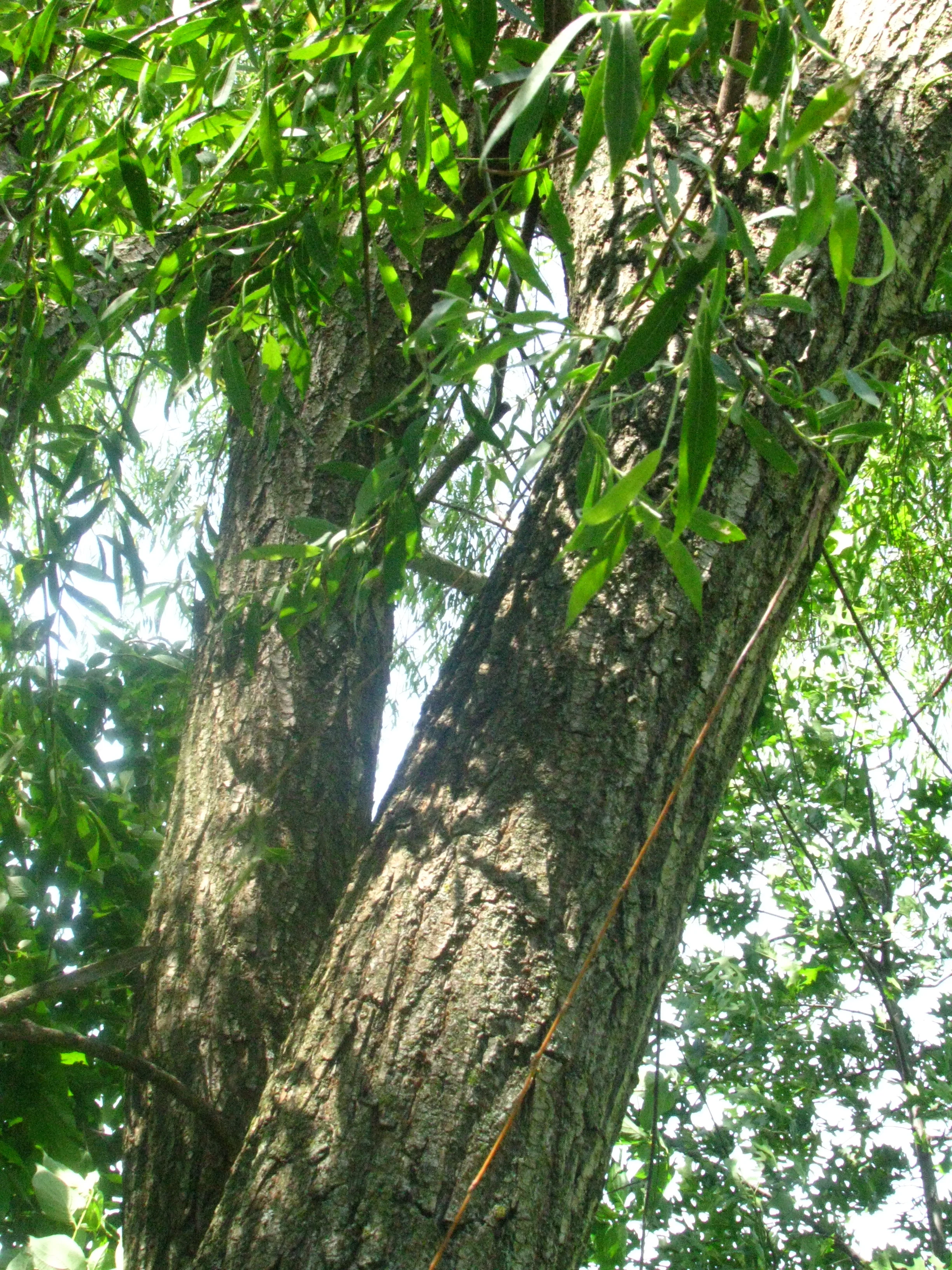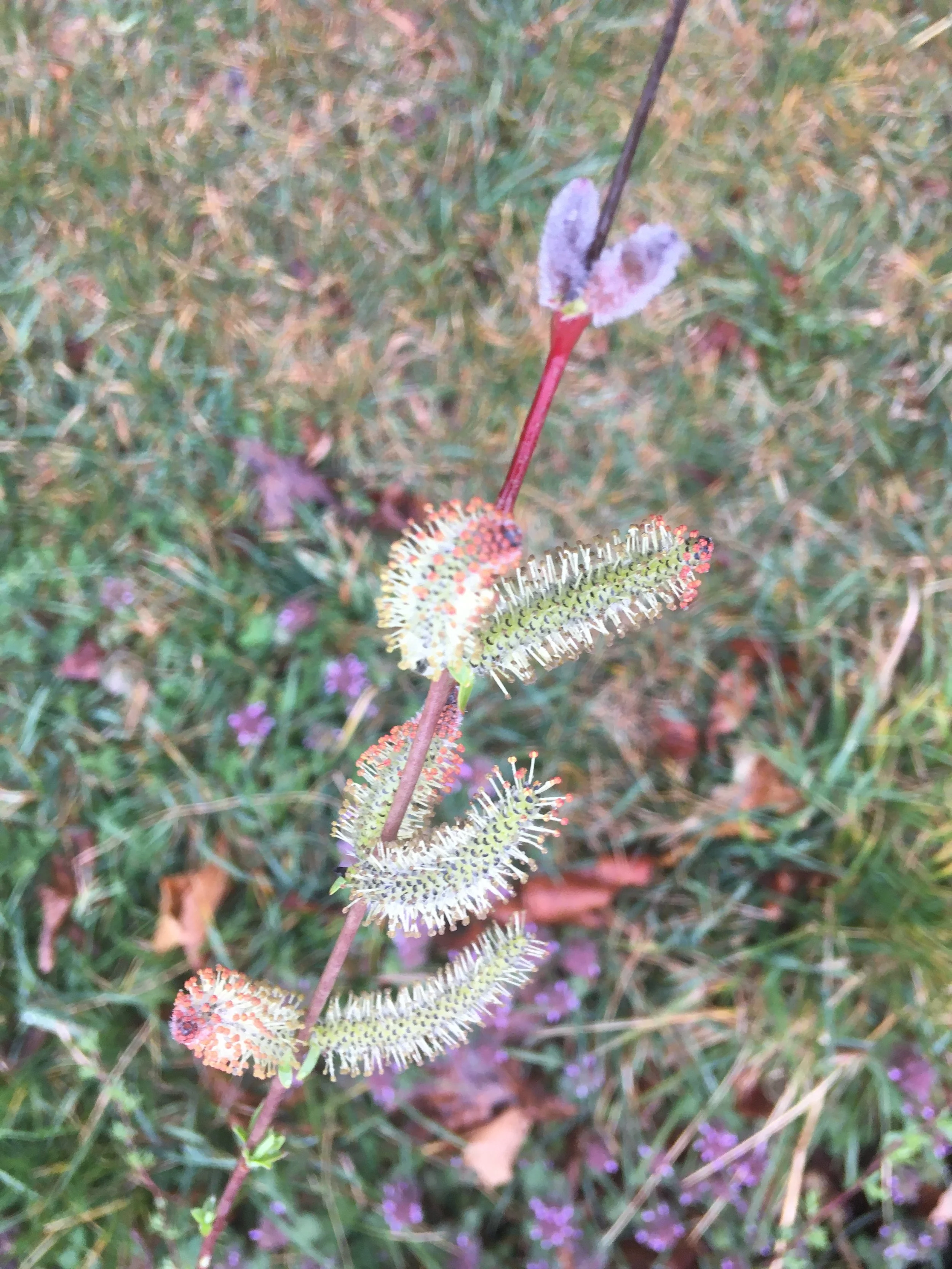Willow











Willow
Salix spp.
Plant for the sake of the water, for soil holding and soil remediation, for coppiced crafts, for medicinal animal fodder, and for their elegant beauty!
See specific species for Hardiness Zones and height. All Willows are dioecious.
“...I will be the willow on your bedside.”
-Hongrang, 16th century Korean geisha
We love all our plants equally, but we always have a special tenderness in our voices when we talk about Willow. And we’re not the only ones. The Jewish Torah mentions “willows of the brook” as one of four species that should be tied together and waved ritually during the holiday of Sukkot (though, admittedly, those may in fact be Poplars!). Willow branches sub in for palm fronds during Palm Sunday celebrations in European churches. During the Chinese festival of Qingming, or Tomb Sweeping, families visit graves of ancestors to clean and pray, often using Willow branches to sweep or placed above doorways as protection from wandering evil spirits. Some Japanese traditions say that ghosts appear where Willows grow. English folklore has a slightly more sinister view of Willow, which supposedly uproots itself to stalk travelers. We haven’t seen any uproot themselves, but we do keep planting them so almost everywhere we go there’s a Willow following not far behind.
We’ve planted hundreds of Willow cuttings along our twin runs to aid the water, and we’re continually drawn back to the beautiful old Black Willow that holds together a confluence below our town nursery. This gorgeous and graceful tree is a powerful healer of soil and watersheds. They grow well in riverbanks and wet soils. The widespread fibrous roots clean water, suck out toxic minerals (mercury, zinc, copper, selenium) and hydrocarbons from the soil, and prevent erosion. Those widespread roots are also strong enough to damage building foundations, so take care where you plant! Willow serves as windbreak and shelterbelt when planted densely and they’re excellent for frequent coppicing (cutting to the ground to encourage regrowth). Many species don’t live long, but they grow quickly so coppicing extends their lives for a long time. Their fast growth makes them vital accomplices in restoration efforts for damaged or abused land and integrated into silvopasture rotations as a medicinal fodder for ruminant animals. Our friend Steve Gabriel at Wellspring Forest Farm tells us that Willow is high in tannins, secondary compounds that support a plant’s ability to protect itself as opposed to primary compounds that encourage growth and reproduction. Willow tannins, with appropriate moderation, can increase milk production and fiber, lower parasite risk, and slow down digestion without preventing ruminants from getting needed nutrition and energy. Munching on tannin-rich fodder like Willow also seems to reduce farting and burping, which means fewer methane bubbles floating out of pastures and into atmospheres!
Willow-lore goes way back. Some of the oldest tools we humans made come from Willow. The flexible branches have been used for thousands of years to make baskets, crafts and tools, fences and houses and furniture, fiber for paper, charcoal for fuel and art, and medicine. Indigenous people of this continent – from the Cherokee to the Haudenosaunee to the Mi’kmaq (Micmac) – have used Willow regularly: for bark infusions to treat fever and help hair grow, decoctions to treat stomach gas, and poultices to treat sprains and bruises. The Potawatomi have made red dyes from the roots and the Tohono O’odham (Papago) split twigs lengthwise, sun-dried them, and use them as the base for coiled basketry and curved structures. Ancient texts from Assyria, Sumer, Greece, and Egypt mention teas and tinctures from leaves and bark. Old remedies advised chewing on Willow bark as an astringent to stop bleeding and diarrhea, but also to relieve headaches and other pains. No wonder that salicylic acid, the main chemical ingredient in aspirin, was first derived from the anti-inflammatory salicin, found naturally in Willow. Salicylic acid also prevents pathogen growth, which is partly why Willow water helps root cuttings of other plants. The bark also contains auxins, which are plant hormones that stimulate root growth. Best to use new shoots soaked in water for 4-6 weeks to make this natural rooting hormone.
We sell bundles of 6”-1’ cuttings taken from streambanks throughout the city and from our own plantings. We also offer 3’ Live Stake bundles of Black Willow for restoration and remediation. The Salix genus has over 400 species, but we currently have about four!
Bankers Dwarf (cottetti): Also known as Cottett Willow. Grows 6-10 feet with slim tough lime-colored branches that turn dark green as they mature. Doesn’t produce seed but grows quickly from cuttings in wet soil and provides good late-winter food for songbirds. Supposedly a cultivar from the Alpine region of Germany introduced to the US as Salix cottetti by the Quicksand Kentucky Plant Materials Center in 1983. However, the venerable Vermont Willow Nursery believes Bankers is a cross between two native Willows: Salix eriocephala and myricoides. Either way, well-suited for stream restoration throughout Appalachia. Hardy from Zones 4-8.
Black (nigra): Native tree that grows 60-80 feet tall in warm climates. Like many Willows, bark can be used as poultice for cuts, wounds, sprains, bruises. Elk and beaver love to browse the leaves and flowers provide for honeybees early in spring. Common all across the Eastern Woodlands and into the Midwest. Hardy from Zones 2-8.
Curly (matsudana): Often called Chinese, Peking, or Hankow Willow and comes from China and northeast Asia. Most Willow experts believe this species is the same as Salix babylonica. Grows well in moist soils and up to 50-60 feet tall. Wonderfully coiled and curved branches used for decoration. Hardy from Zones 4-8.
Streamco Purple Osier (purpurea ‘Streamco’): Grows 8-12 feet tall. Named for the purple-red stems in first season’s growth. Easily recognized by shiny red buds in new growth and blue-green leaves with silver undersides that sprout on opposite sides of the branch. Fast-growing, resilient, and very tolerant and even appreciative of heavy coppicing, from a blade or animal browse. Our friends at Wellspring Forest Farm use it as a rotational fodder for their Katahdin sheep. Planted extensively in the Northeast for streambank restoration. Excellent habitat for small critters, and the whips are used for fine basketry and tying grapevines in vineyards. Purpurea was brought over from Europe and the Streamco cultivar came from Big Flats Plant Materials Station in 1975. Hardy from Zones 3-7.